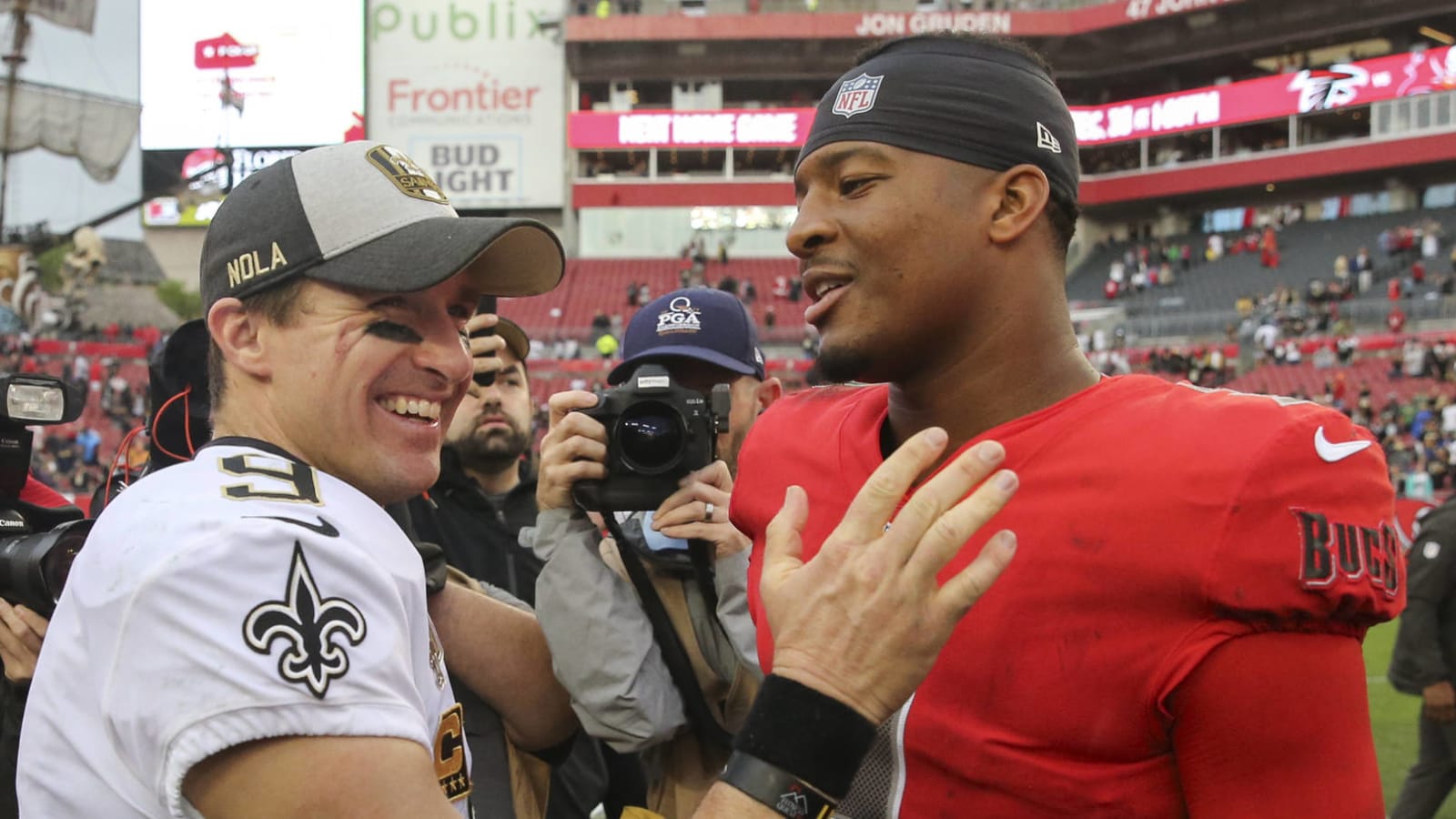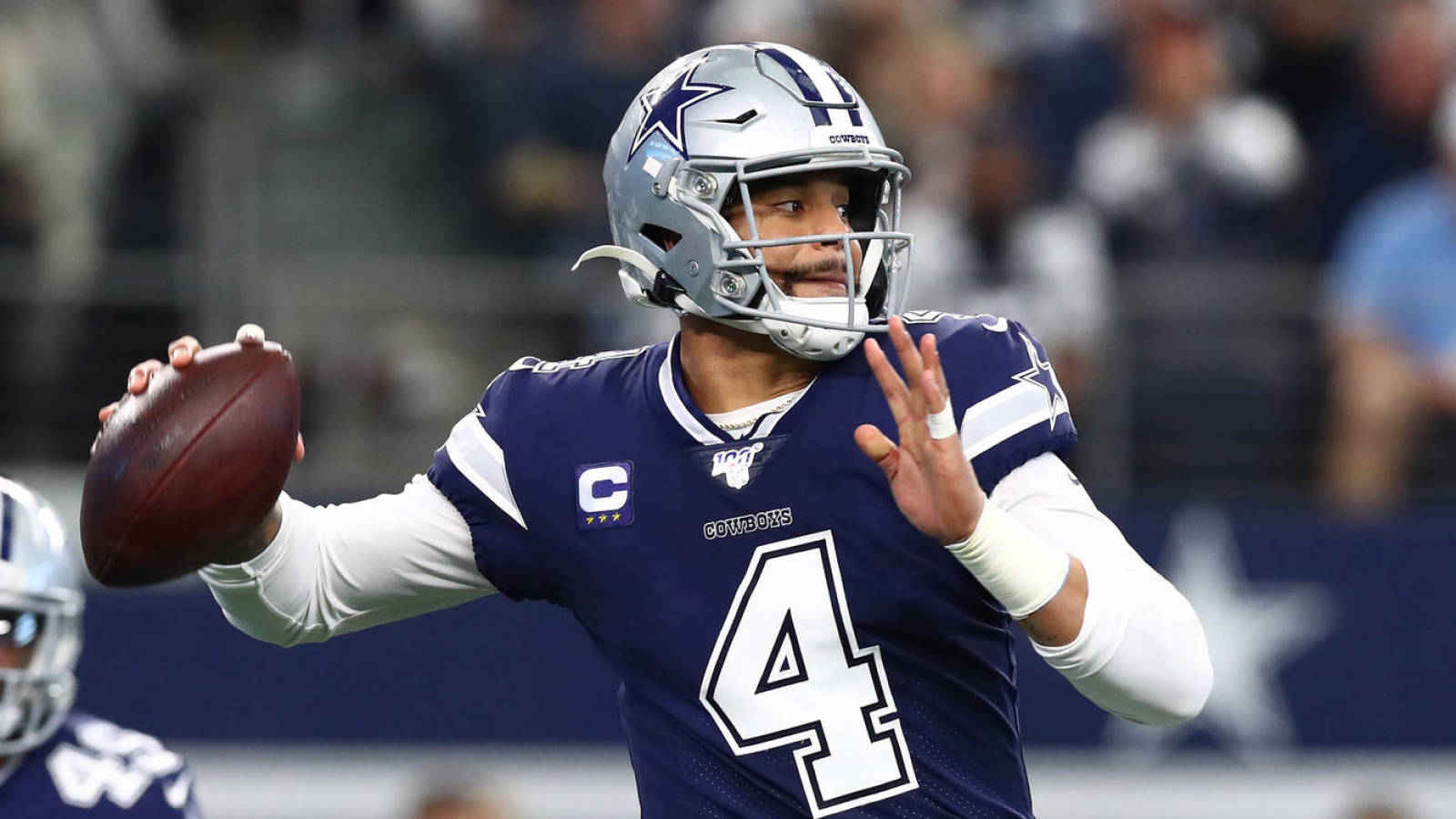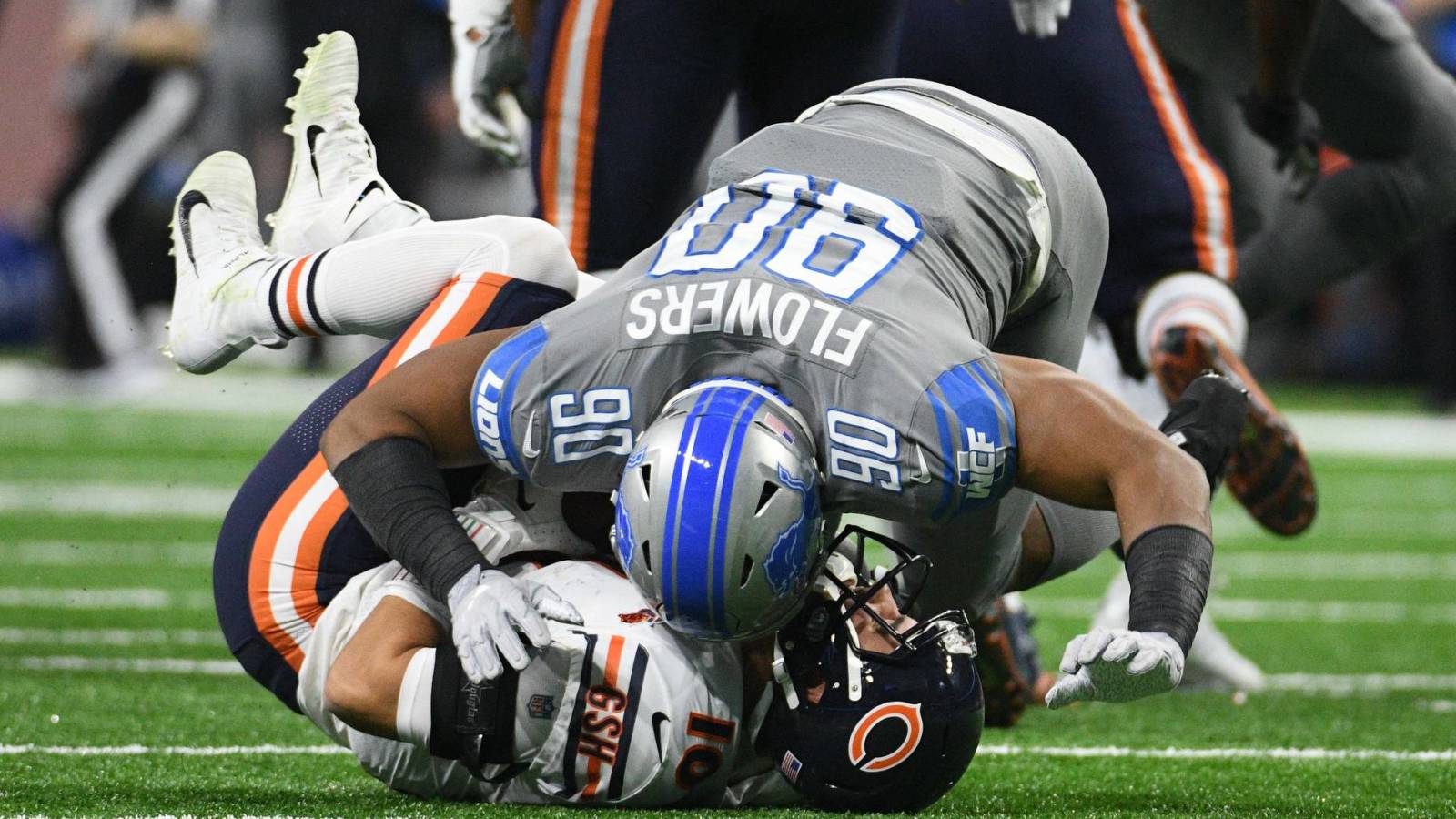
Pass/fail: Assessing NFL's best, worst quarterback situations
As we move deeper into the off-season, it's time to analyze which teams have the best -- and worst -- quarterback situations. Yardbarker's Sam Robinson, Chris Mueller and Michael Nania weigh in.
Best: Chiefs
ROBINSON: The Saints may have a superior stable of quarterbacks. They would trade it for Patrick Mahomes. The Chiefs made one of the all-time great draft trades when they gave up first- and third-round picks to vault from pick No. 27 to No. 10 and select Mahomes in 2017. He transformed a high-floor team with a defined ceiling into a Super Bowl champion.
To understand Mahomes’ impact, knowledge of the Chiefs’ quarterback history is essential. For decades after passing on Jim Kelly and Dan Marino in 1983 –- taking Todd Blackledge seventh overall –- the Chiefs did not make another first-round investment at the position. The subsequent brigade of veteran passer acquisitions largely could not move the Chiefs onto the Super Bowl radar.
In 24 seasons between the Bills knocking Joe Montana out of the 1993 AFC championship game and Mahomes’ MVP debut, the Chiefs went 1-10 in playoff games. Excepting a brutal stretch in the late 2000s and early ‘10s, the modern Chiefs -– with ex-49er backups Steve Bono, Elvis Grbac and Alex Smith and 2001 trade acquisition Trent Green -– pieced together several successful seasons. But higher-profile quarterbacks eliminating them became a frequent occurrence. Mahomes allowed the Chiefs to flip roles immediately.
The 24-year-old superstar will enter his third season as a starter with a 76-18 TD-INT ratio. Despite missing two games last season, Mahomes has 10 more touchdown passes than any other quarterback since 2018. The Texas Tech-developed talent’s combination of arm strength, elusiveness and accuracy represents a better bet to keep the Chiefs a perennial Super Bowl threat than top rival Lamar Jackson’s run-oriented skill set does for the Ravens. Andy Reid managing Mahomes’ career places the Chiefs in the league’s most enviable situation.
Kansas City’s organizational blueprint will change once Mahomes signs a record-setting extension. Going from a $4 million salary to one that should eclipse $40M will limit the Chiefs’ ability to acquire veteran support. Despite being extension-eligible, Mahomes remains attached to American sports’ best contract. In snapping a 50-year Chiefs Super Bowl drought, that arrangement has provided incalculable value.
Worst: Redskins
Washington’s quarterback setup is both financially constraining on one end and perhaps misshapen on the other. With a new regime in place, it could change significantly in 2021.
Smith’s contract again tops the Redskins’ payroll, with his $21.4M cap number coming in $6M higher than any other Washington player’s. The 36-year-old quarterback’s recovery from a life-threatening broken leg doubles as one of this era’s most triumphant stories. But after 17 surgeries, he is likelier than not to join Joe Theismann in seeing fibula and tibia breaks end his career. Smith’s contract represents more than 10% of the Redskins’ salary cap. Because of the deal’s injury guarantees, the Redskins cannot save money by cutting Smith until next year. With its highest-paid player likely out for a second season, the struggling franchise continues to battle uphill.
After ranking last (by a mile) in Football Outsiders’ QBR metric last season, 2019 No. 15 overall pick Dwayne Haskins has key factors working against him. Head coach Ron Rivera did not draft him, new backup Kyle Allen knows offensive coordinator Scott Turner’s system better, and Washington still features one of the league’s worst weaponry arrays. The Redskins have done poorly to support their quarterback prospect, and if the ex-Ohio State superstar cannot impress Rivera and Co. this season, Washington will be linked to the 2021 quarterback draft class.

Best: Cowboys
MUELLER: Despite coming up short against top defenses last season, Cowboys QB Dak Prescott has traditional and advanced statistics from 2019 on his side. His 99.7 passer rating was 10th overall and fourth among quarterbacks who started all 16 games. He had the fourth-most TD passes (30) and his 8.2 yards per attempt ranked fifth. Prescott challenged defenses downfield, with his intended air yards per attempt of 9.3 ranking fifth, per Pro Football Reference.
Those stats could have been even better. Prescott's receivers had the second-highest drop percentage in the league (6.2 percent), behind only Buffalo’s Josh Allen. Dallas had 36 drops, the highest number in the NFL, per Pro Football Reference. Prescott also had the sixth-lowest “bad throw” percentage (14.6) and the seventh-highest “on-target” throw percentage (77.6). Despite Dallas’ failure to make the postseason, and Prescott’s penchant for bad games at the worst times, his overall numbers were impressive.
In the off-season, Jerry Jones bolstered the position by signing ex-Bengals quarterback Andy Dalton. Dalton and Cincinnati were headed for a divorce after the Bengals took LSU’s Joe Burrow first overall in the year’s draft. Cincinnati is a long-time NFL punchline, but Dalton has a 70-61-2 career record and a reputation as a quarterback who can put up numbers as long as his protection holds up.
If Dalton is pressed into duty, he’ll be playing behind an offensive line that registered a 78.3 pass blocking grade from Pro Football Focus in 2019, eighth best in the NFL. (Cincinnati was 26th, at 63.7.) The Cowboys have weapons galore on offense, and if Prescott gets hurt (he has never missed a start) or falters, Dallas has two quarterbacks capable of putting all that skill to good use.
Worst: Packers
The Packers, who were 13-3 last season, have a mess on their hands. Their decision to draft Utah State's Jordan Love was bold, but it comes with too much risk. Is it worth messing with longtime starter Aaron Rodgers?
Yes, Rodgers played more like a game manager than a game-breaker last season, averaging just seven yards per attempt, 17th in the NFL, and putting up a 95.4 passer rating, his lowest since 2015 and only marginally above the league average of 90.4. For the second straight season, Rodgers had the lowest interception rate in the league, checking in at 0.7 percent, but the flip side of that figure was that he rarely challenged defenses downfield.
But Green Bay did nothing to get him receiving help for Davante Adams, and succeeded only in creating an awkward, untenable situation in their quarterback room. Love may be the long-term answer, but he is a project and needs at least a full season, perhaps two, of learning from the bench before taking over.
Rodgers may not be the otherworldly talent he was in the first half of the 2010s, but he can still play at a high level. Now he seems headed for a collision with second-year head coach Matt LaFleur. It won't be pretty.

Best: Saints
NANIA: For the ultimate QB room, you want a quarterback who can help you immediately compete for a title and a backup who has the potential to do so. The Saints have both boxes checked.
Even at 41, Drew Brees remains one of the NFL's best QBs. In 2019, he ranked second in the NFL with a career-high 116.3 passer rating. That marked Brees' fifth consecutive season with a rating of 100 or better, giving him the second-longest streak in NFL history (behind Aaron Rodgers' six seasons from 2009-14). His impact was made clear last season, as the Saints averaged 30.6 points in games started and finished by Brees but 20.7 points in the six games led by Teddy Bridgewater. New Orleans will again be a serious Super Bowl contender in 2020 with Brees at the helm.
Behind Brees, the NFL's all-time leading passer (77,416 yards), the Saints have Jameis Winston, 2019's leading passer (5,109 yards). While Winston's career in Tampa Bay was wildly inconsistent and marred by turnover issues, there is no questioning his raw talent.
The former No. 1 pick can sling it -- his average of eight yards per attempt over the past three seasons ranks seventh best out of 40 qualifiers. With Lasik surgery, a year (or two) to simmer under the tutelage of Brees and Sean Payton and a star-studded roster, Winston could finally fulfill his potential when he steps out as the heir to Brees.
Worst: Bears
Whereas the Saints have both boxes checked, the Bears have neither addressed, and it can be argued they are the only team in the NFL with that distinction.
The Bears do not have a quarterback who can help them win in 2020. Neither Mitch Trubisky nor Nick Foles is a good bet to provide above-average play. Trubisky ranked last out of 32 qualified quarterbacks with 6.1 yards per attempt in 2019 (league average 7.2). Jacksonville was 0-4 in games started by Foles last season, losing each game by at least 14 points. (It went 6-6 without him.) While Foles had spurts of stardom as an Eagle, he has been awful for teams outside of Philadelphia, going 5-11 as a starter with 13 touchdowns, 12 picks and 6.3 yards per attempt.
In addition to lacking a win-now starter, the Bears do not have a developmental prospect. Chicago's lone quarterback under contract behind Trubisky and Foles is Tyler Bray, a 28-year-old former undrafted free agent who has thrown one pass over six seasons in the NFL. General manager Ryan Pace did not draft a quarterback or even sign one as an undrafted free agent.
No present. No future. The Bears are in total no-man's-land at quarterback. With a talented roster and only five draft picks in 2021, Chicago may be too good to land high enough in the draft order for an elite prospect and it lacks ammunition to trade up for one.
More must-reads:
- One move each NFL team should still make this offseason
- Every NFL team's most head-scratching offseason move
- The 'NFL passing TD leaders by year' quiz
Breaking News
Trending News
Customize Your Newsletter
 +
+
Get the latest news and rumors, customized to your favorite sports and teams. Emailed daily. Always free!








